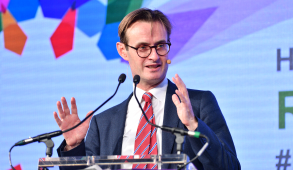Cost uplift factor increased by 0.7%
Inflation has increased since the autumn spending review and December planning guidance. In May, NHS England announced an extra £1.5bn to cover these extra costs. The extra money is being included in system allocations and has been funded from within NHS England‘s wider budget.
At the time, NHS England and NHS Improvement chief financial officer Julian Kelly (pictured) said that the extra funding had been calculated to cover increases in a range of costs compared to the assumptions in the spending review. These included increased costs for: energy; the care market; private finance initiative contracts; and other contracts and services.
‘We’ve said to the NHS we need to deal with [higher than anticipated inflation] nationally, but, setting that aside, we need balanced plans,’ he said. Mr Kelly added that, in return for the additional funding, systems would have to agree to a number of conditions, including regaining control of agency and bank spending and consultancy costs.
However, while top-up allocations had been identified for systems, there had been no formal indication of the increased level of inflation that should be built into local contracts with providers. NHS England and NHS Improvement have now issued a revised cost uplift factor of 3.5%. This has been used to calculate revised tariff and unit prices and should be used for local pricing arrangements including aligned payment and incentive agreements.
The original cost uplift was set at 2.8%, based on a weighted combination of a 3.0% increase for pay, 0.9% for drugs, 2.7% for capital and 2.7% for other costs.
The NHS has moved away from the use of national tariff prices and has been asked to adopt new aligned payment and incentive contracts for this year, with a fixed price based on funding an agreed level of activity and a variable element that increases or reduces payment based on actual elective activity levels undertaken.
Systems have been encouraged to use the block payments issued in the second half of 2021/22 as the starting point for the fixed element. The annualised figure is then typically increased by the national cost uplift before being adjusted for efficiency. The uplifted tariff prices will also influence the variable payment, with additional activity paid at 75% of the unit price and shortfalls in activity resulting in reductions in payment at the same rate.
NHS England and NHS Improvement said they would produce a template local variation statement for commissioners to confirm use of the higher figures.
Related content
We are excited to bring you a fun packed Eastern Branch Conference in 2025 over three days.
This event is for those that will benefit from an overview of costing in the NHS or those new to costing and will cover why we cost and the processes.